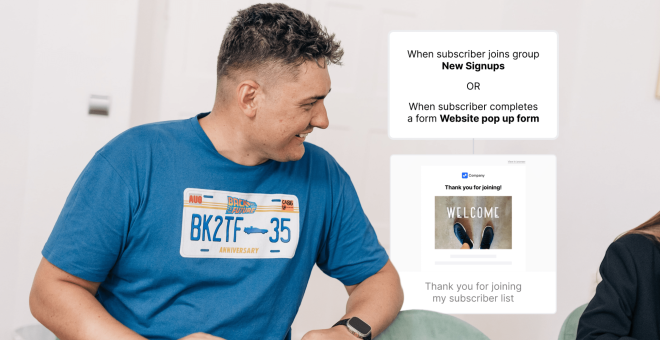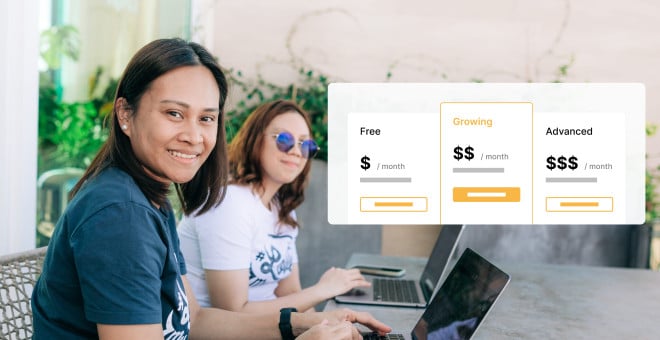Bullseye! Automatically send targeted emails based on subscriber behavior
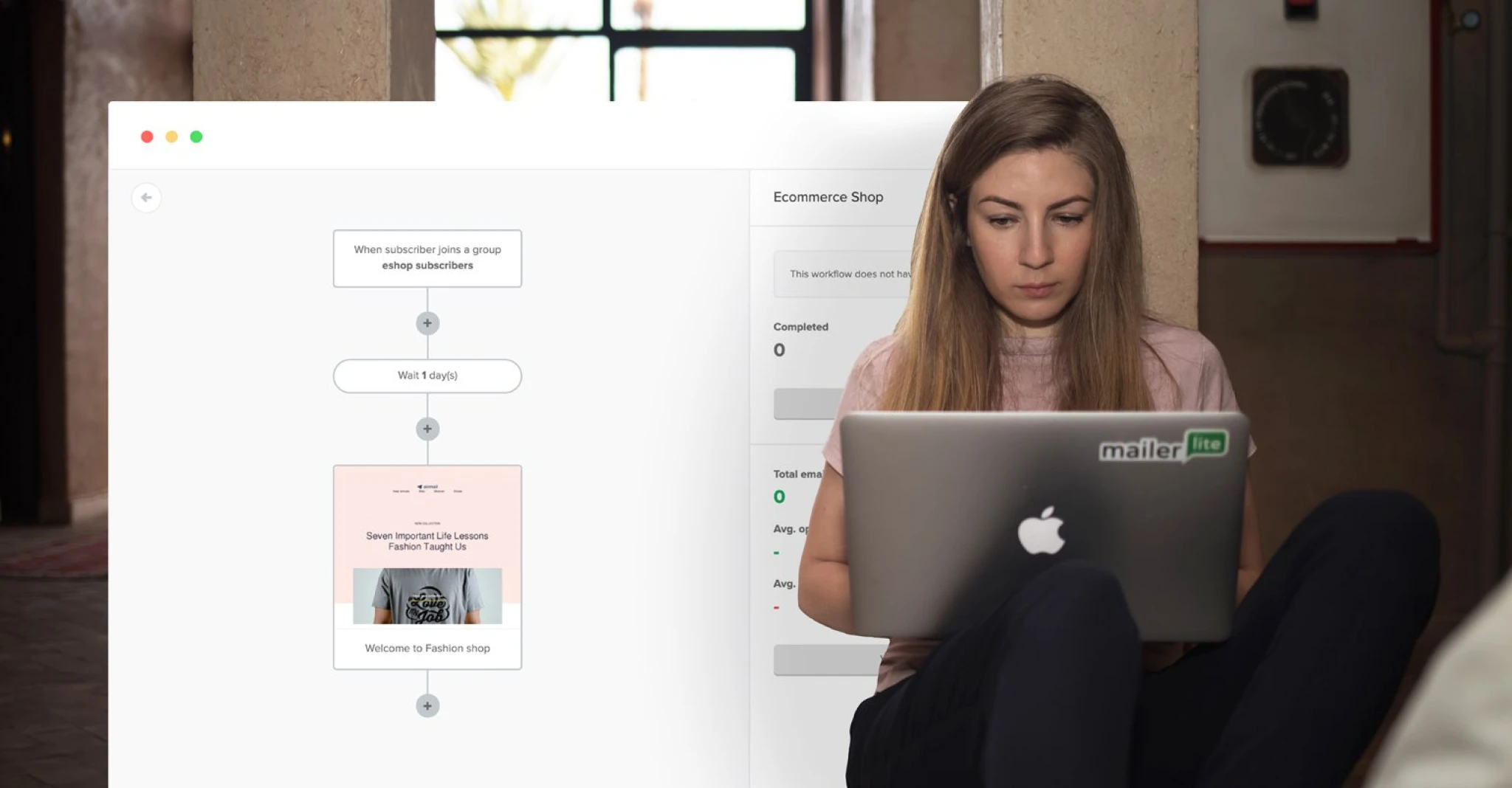
You’ve probably heard the phrase “actions speak louder than words”, and it’s true! Even in the email world, the best way to uncover someone’s true motivations is to look at their past behavior.
Thanks to automation, you no longer have to guess or assume what your subscribers are interested in—their actions give you those insights.
Almost any action a subscriber takes can be used to trigger an automated email. You can welcome new subscribers, send targeted product recommendations, follow up with customers who have abandoned their shopping carts, collect customer feedback, and more.
In this blog post, we'll show you how to use automation triggers to create new target groups based on subscriber behavior, allowing you to send targeted email campaigns that will deliver the conversion rates of your dreams.
What is targeted email marketing?
Targeted email marketing is when you separate subscribers into different segments or groups based on specific behavior or criteria (e.g engagement, demographic, interests, etc) to send relevant content based on those actions or characteristics.
For example, subscribers who signed up via a promotion pop-up advertising a webinar on a specific topic can be added to a group that triggers a workflow full of related content for subscribers who are specifically interested in that topic.
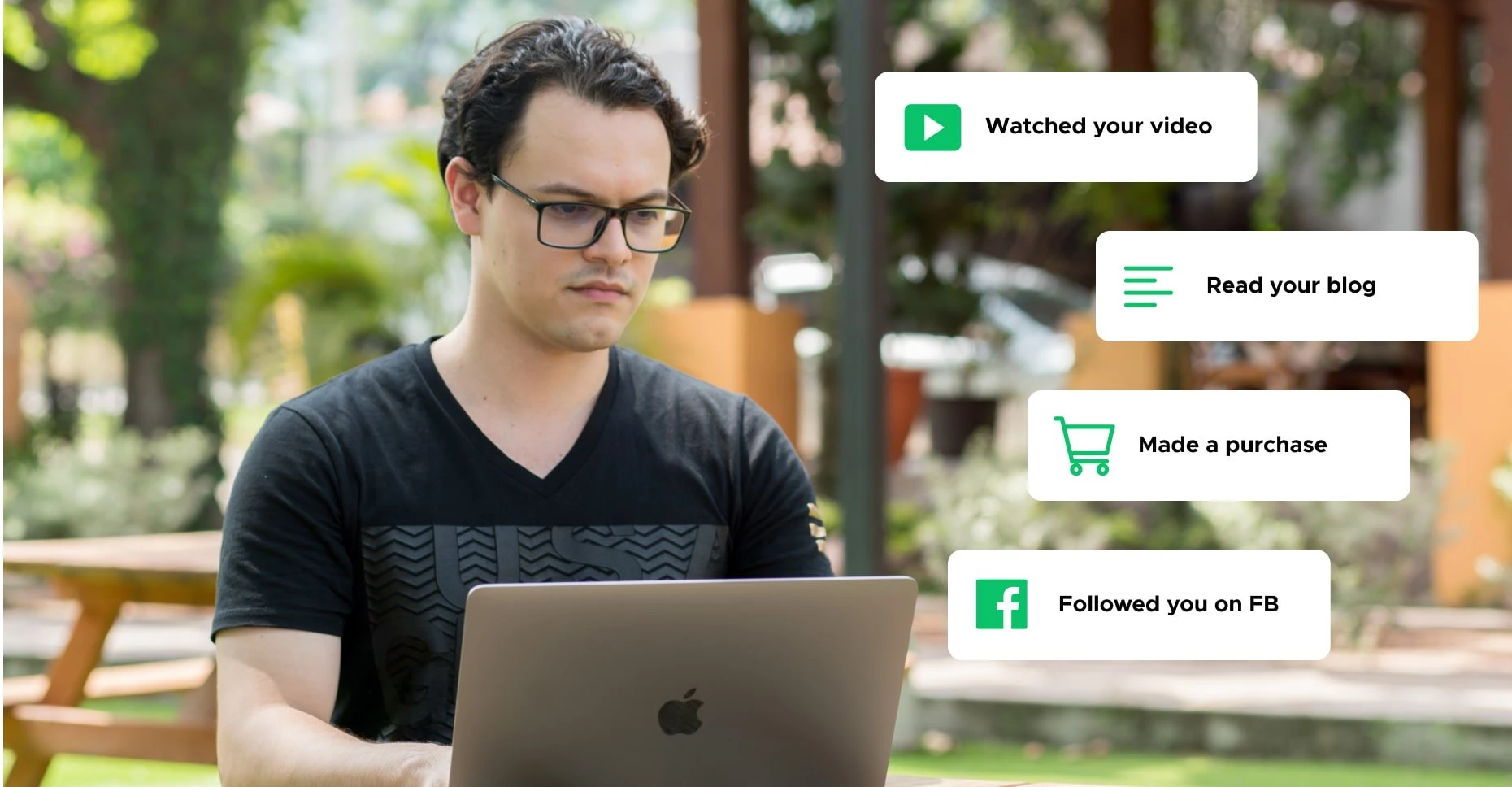
When you separate your subscribers by these types of characteristics, you gain insight into what they like. Your targeted emails can anticipate what your subscribers already enjoy and speak directly to their interests, which will skyrocket email open rates and click-through rates.
With the help of email marketing tools like MailerLite, organizing audience segments and sending targeted emails can be completely automated.
To decide which characteristics to target, you need to put on your detective hat. Think about what you want to achieve and then analyze your subscribers’ actions to figure out what will help you target them better.
The smaller the size of the segment that you create, the easier it is to send ultra-relevant messages.
Let’s say you run a sneaker boutique. It would make a lot of sense to send your female customers emails that promote sneakers for women.
But wouldn’t it be even better if you grouped all women that bought Nike sneakers into one segment and automatically sent them an email when a new women’s Nike sneaker is released?
The relevancy and timing of this type of behavioral email will result in higher customer satisfaction and increased sales that will have you doing a little dance at your desk.
Benefits of targeted email marketing
Email targeting is not some super technical practice that only expert marketers know how to do. With a few steps, you can start sending targeted emails using MailerLite and see what the hype is all about!
1. Increased conversion rates 🎉
When people receive targeted campaigns that are tailored to their interests, they’re more likely to convert! In fact, 72% of consumers only engage with personalized messaging.
2. Personalized customer experience 🤩
Everyone likes receiving messages that are relevant to them. Targeted emails ensure you deliver content that matters to each individual. This will build trust over time.
3. Greater customer insights 🔍
If you send targeted content to different groups of your subscribers, you can learn what they are interested in. This can help create even more targeted content in the future.
4. Improved customer retention 🤝
You can use targeted email marketing to send a re-engagment campaign tailored around new products or exclusive offers to inactive subscribers. This can lead to long-term loyalty and repeat business.
The 5 main types of targeted emails
With the use of automation, email targeting becomes a dynamic process. Contacts are added and moved to different groups as you collect more customer data.
Although targeted email campaigns can be sent based on various online actions, we’ll focus on these 5 characteristics:
Interest
Engagement
Past purchases
Customer feedback
Demographic
1. Targeted emails by interest
This targeting strategy uses your audience’s interests to create personal, engaging emails. Big players like Spotify and Netflix use this method all the time to send out automated targeted emails.
Have you ever received Spotify's yearly roundup email that includes your most played songs and favorite genres of that year? Spotify smartly uses this information to automatically introduce you to similar music or update you about new releases.
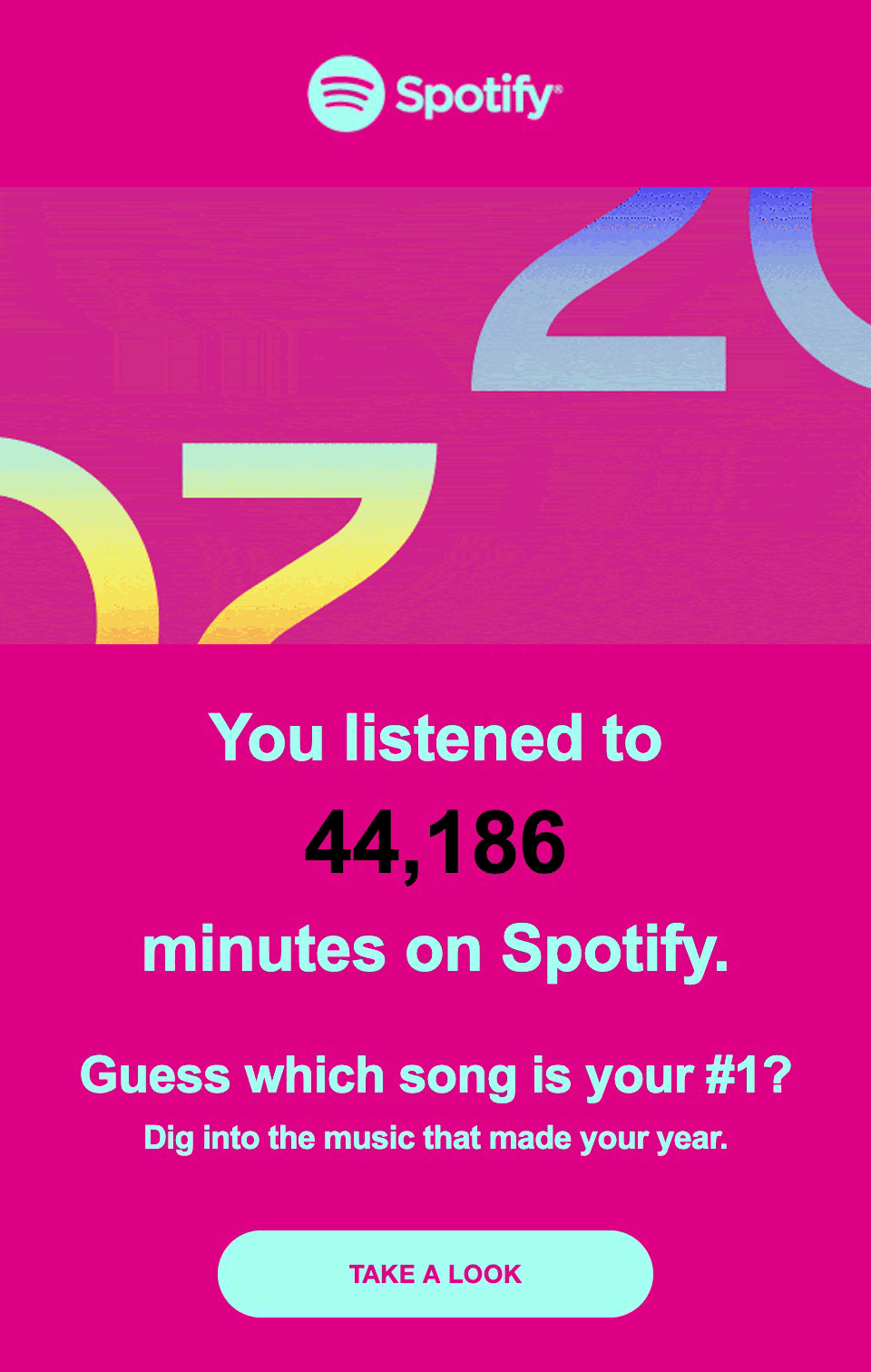
You don’t have to be a huge company like Spotify to target subscribers by interest.
What do you know about your target customer’s interests and purchase behavior? And how can you use this information to get loyal customers, add value, sell other/more products or increase product usage?
The easiest way to find out what your subscribers are interested in is to apply different groups to each sign-up form depending on what each webpage or form is offering. Another way is to use link triggers that automatically group subscribers based on links that they click.
For example, if a subscriber clicks on a newsletter link to a blog post about DIY kitchen renovations, they could be automatically added to a DIY interest group and a home renovations group.
2. Targeted emails by engagement
This strategy works by sending targeted emails to subscribers who have engaged with your email campaigns. For example, if a subscriber clicks a certain link in an email, you can automatically trigger a targeted email based on that link click without lifting a finger.
This is done using the automation trigger ‘When a subscriber clicks a link’.
You can also segment subscribers based on how engaged they are by creating a segment for highly engaged subscribers in order to offer them exclusive deals and upsell opportunities—or a segment for inactive or unengaged subscribers in order to send more nurturing re-engagement campaigns.
MailerLite makes it super easy to segment inactive subscribers using the ‘Time inactive’ filter, which you can use to find subscribers who haven’t opened or engaged with your emails in a certain period of time.
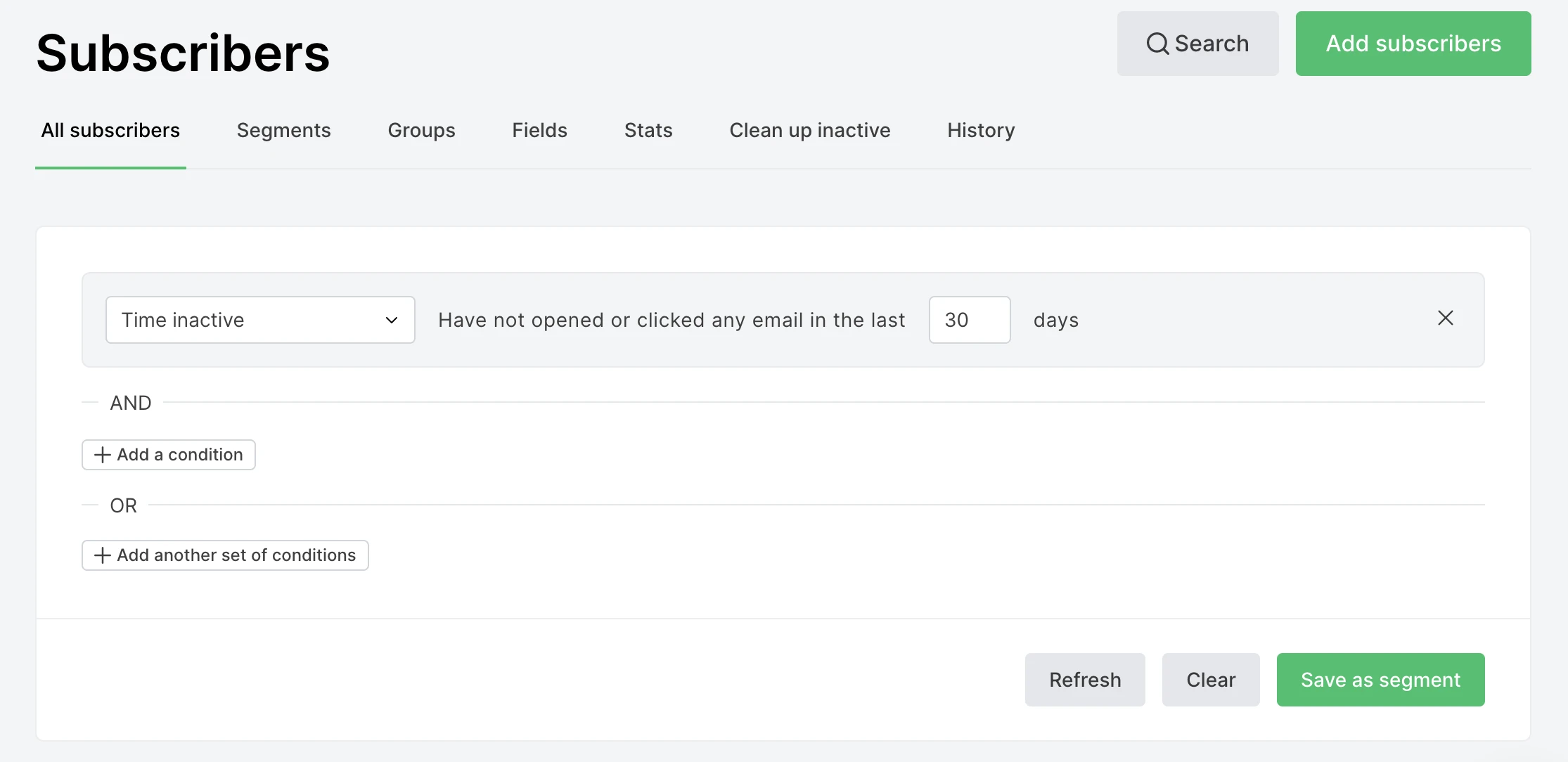
3. Targeted emails by purchases
When targeting emails by purchasing behavior, you can go about it in several different ways.
You can use purchase history to predict the future purchases the customer will make. Or, you can observe customer behavior patterns in different phases of the customer journey to estimate how likely the person is to complete an order.
Did the person click the CTA in the email and put a product in their basket? This shows that the chance of a sale is very likely. In the event of cart abandonment—where the customer doesn’t end up buying—an automated reminder email can help complete the order.
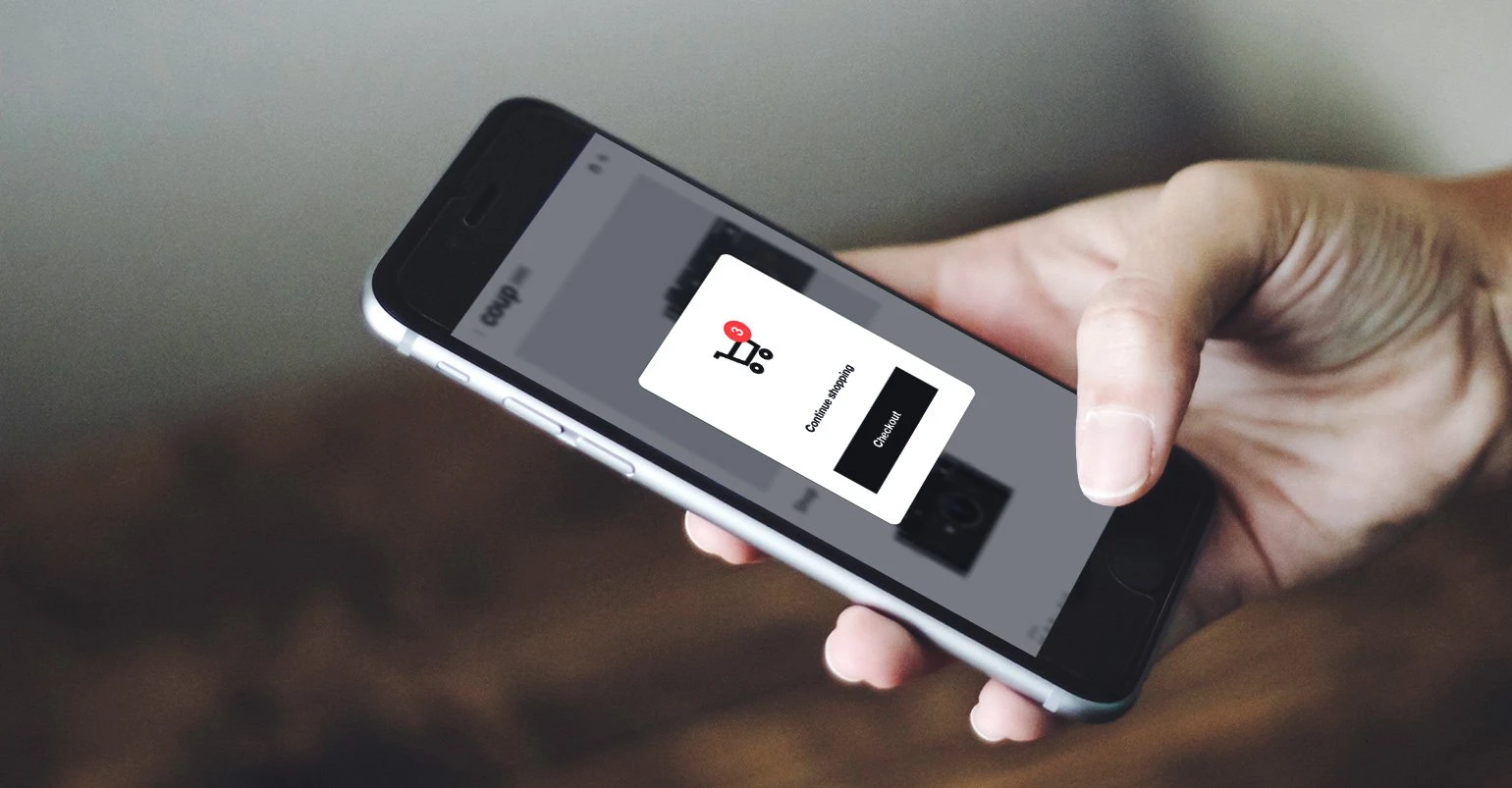
4. Targeted emails by customer feedback
A quick and simple way to gather more information about your customers is to just ask! In-email surveys are the perfect way to do this.
A simple implementation is a survey where the customer is asked about their satisfaction. For example, when a subscriber purchases a specific product, you can send an automated email survey asking if they’re satisfied with the product and/or invite them to provide feedback.
The MailerLite survey block allows you to automatically segment subscribers based on their answers. You can then use that information to trigger targeted emails by customer feedback.
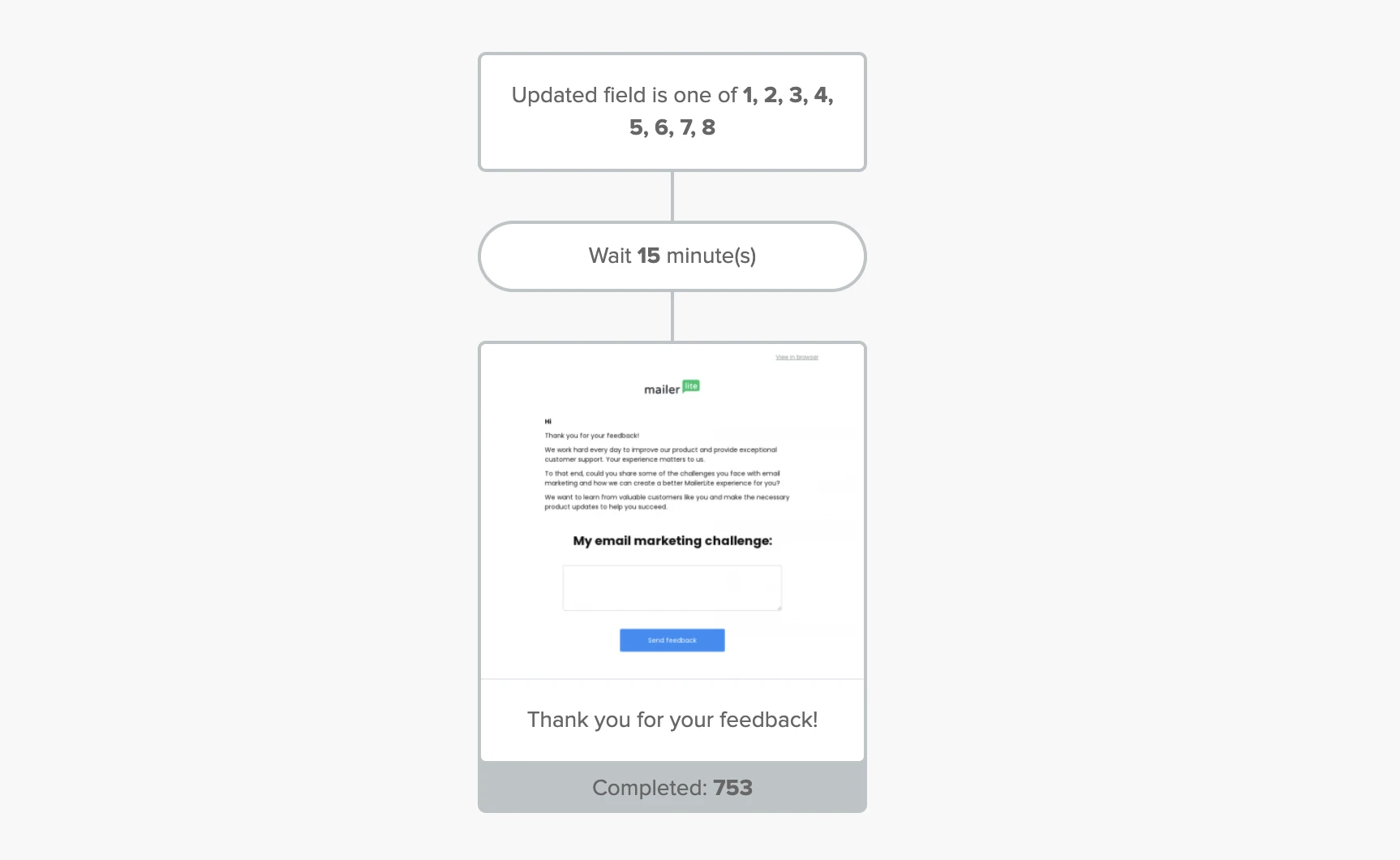
In this example subscribers were sent a Net Promoter Score (NPS) survey in which they were asked to rate their satisfaction from 1-10. Subscribers who scored less than 9 were automatically sent a targeted email using the ‘Updated field’ trigger, inviting them to provide feedback.
5. Targeted emails by demographic
You can target email subscribers by their demographic information. This could include age, gender, location, or other information relevant to your niche such as wedding date, fitness level etc.
For example, if you run a wedding planning business, you could include fields in your form that require subscribers to enter their ideal location and wedding date then trigger emails based on those fields.
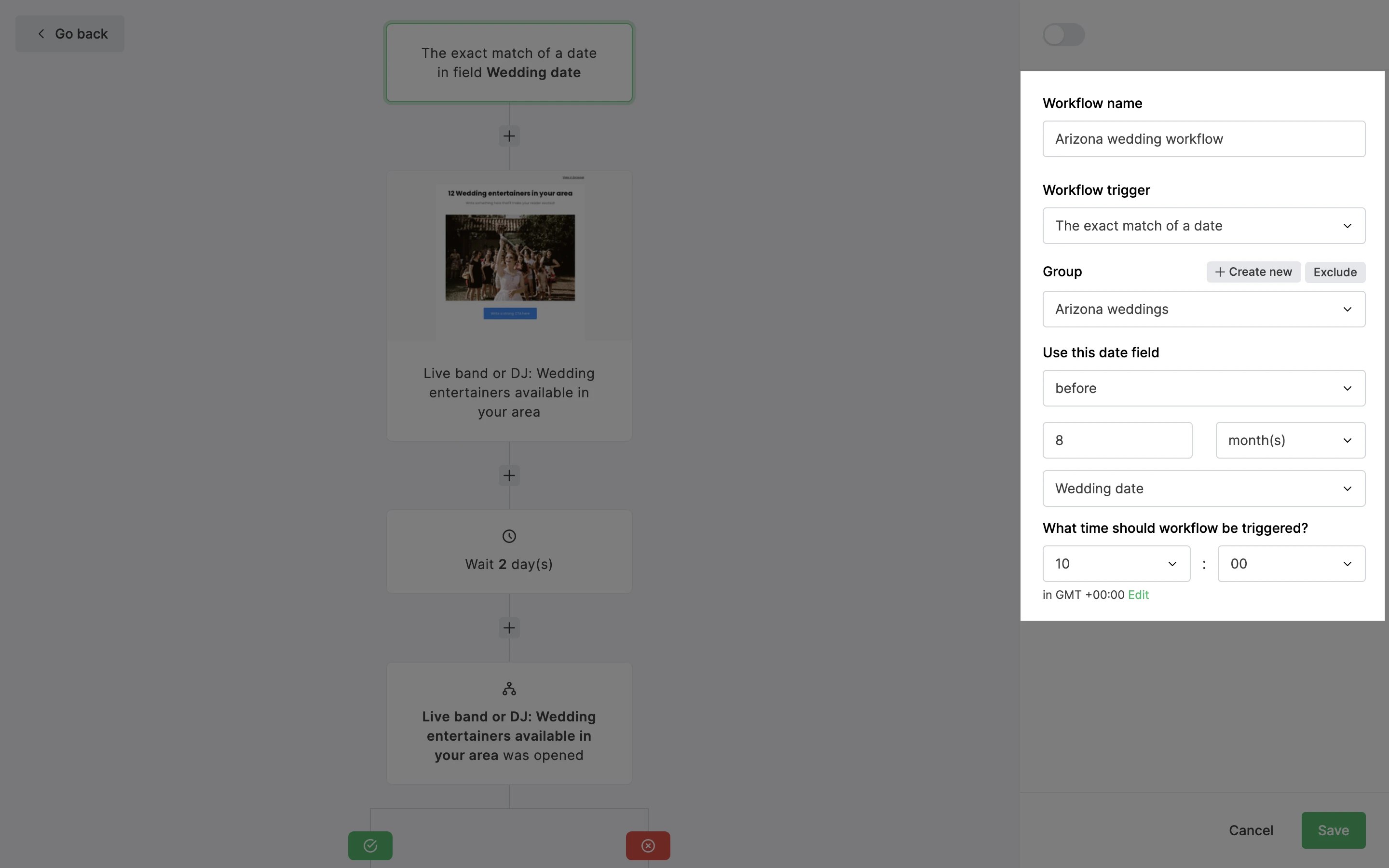
The workflow in the example above will be triggered 8 months before the wedding date of subscribers getting married in Arizona.
How to create targeted email automations in MailerLite
Now you’ve gotten a taste of how to define your target audience, let’s put it into practice! Take a look at the fictional case study below, then learn how to use automation to send targeted emails.
Theoretical case study:
You run a travel agency and use landing pages to promote deals, offers, packages, etc. You’re currently running an Art Basel Miami promotion that includes flights to Miami and an entry ticket as well as a premium package that has the added bonus of a 3-night stay at a hotel nearby.
Last night, Sally from Chicago signed up for your email list via your Art Basel Miami landing page.
Your goal is to automatically:
Target Sally and other subscribers that are interested in attending Art Basel in Miami to promote your special package.
Send personalized follow-up emails based on engagement.
Deliver event information to subscribers who purchase the package.
Cross-sell related promotions to attendees.
Collect feedback after the event.
1. Automatically target subscribers interested in your offering
When you create a landing page, you’re prompted to select a group into which subscribers will be added upon signing up. So in this case study, Sally is automatically added to a group called ‘Art Basel Miami Sign-ups’.
You can then create an automation that is triggered every time a subscriber joins that group and starts off with an email step containing your special packages.
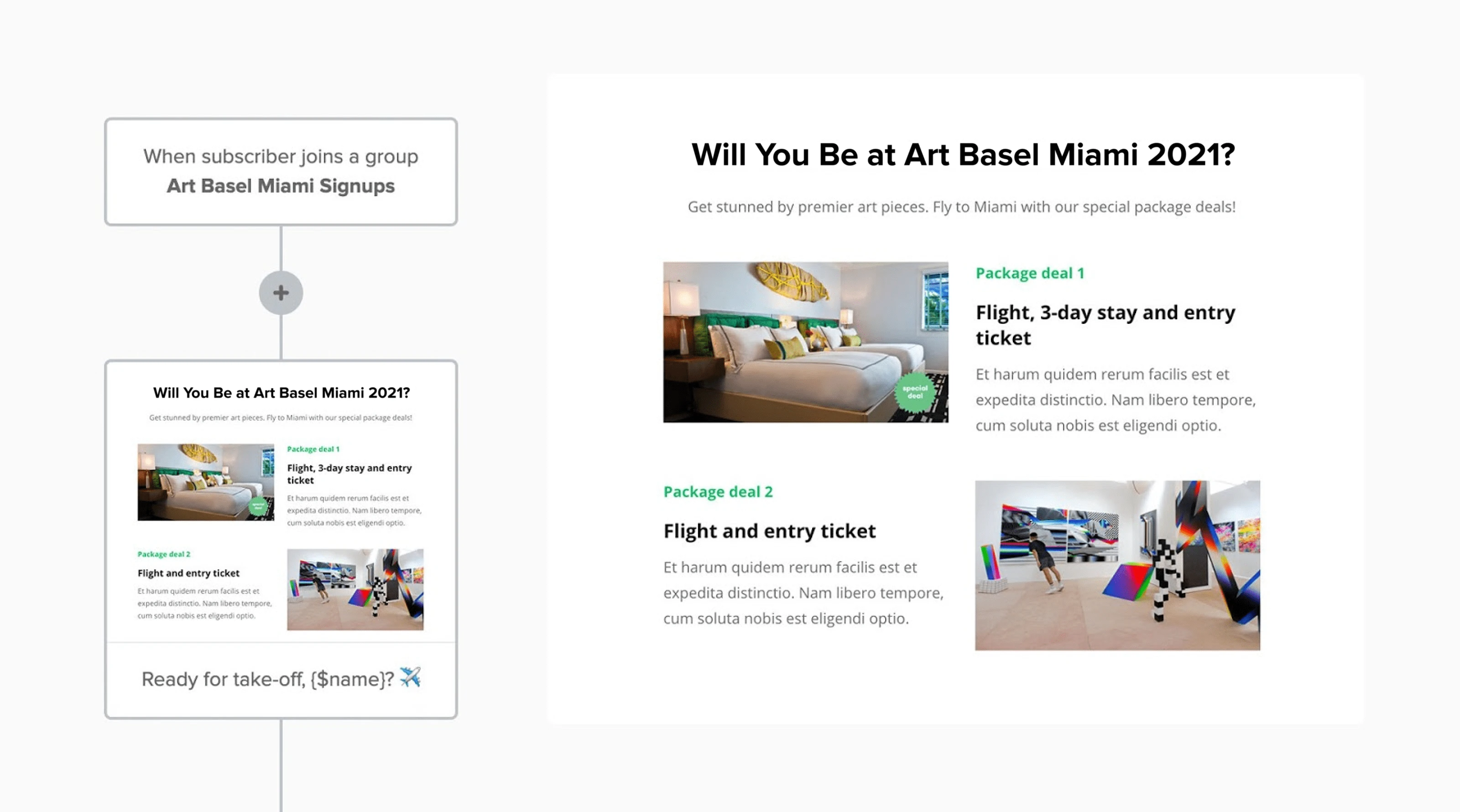
2. Automatically send follow-up emails based on engagement
To segment workflow subscribers by engagement, add a delay followed by a condition step that splits the workflow based on whether or not the first email was opened.
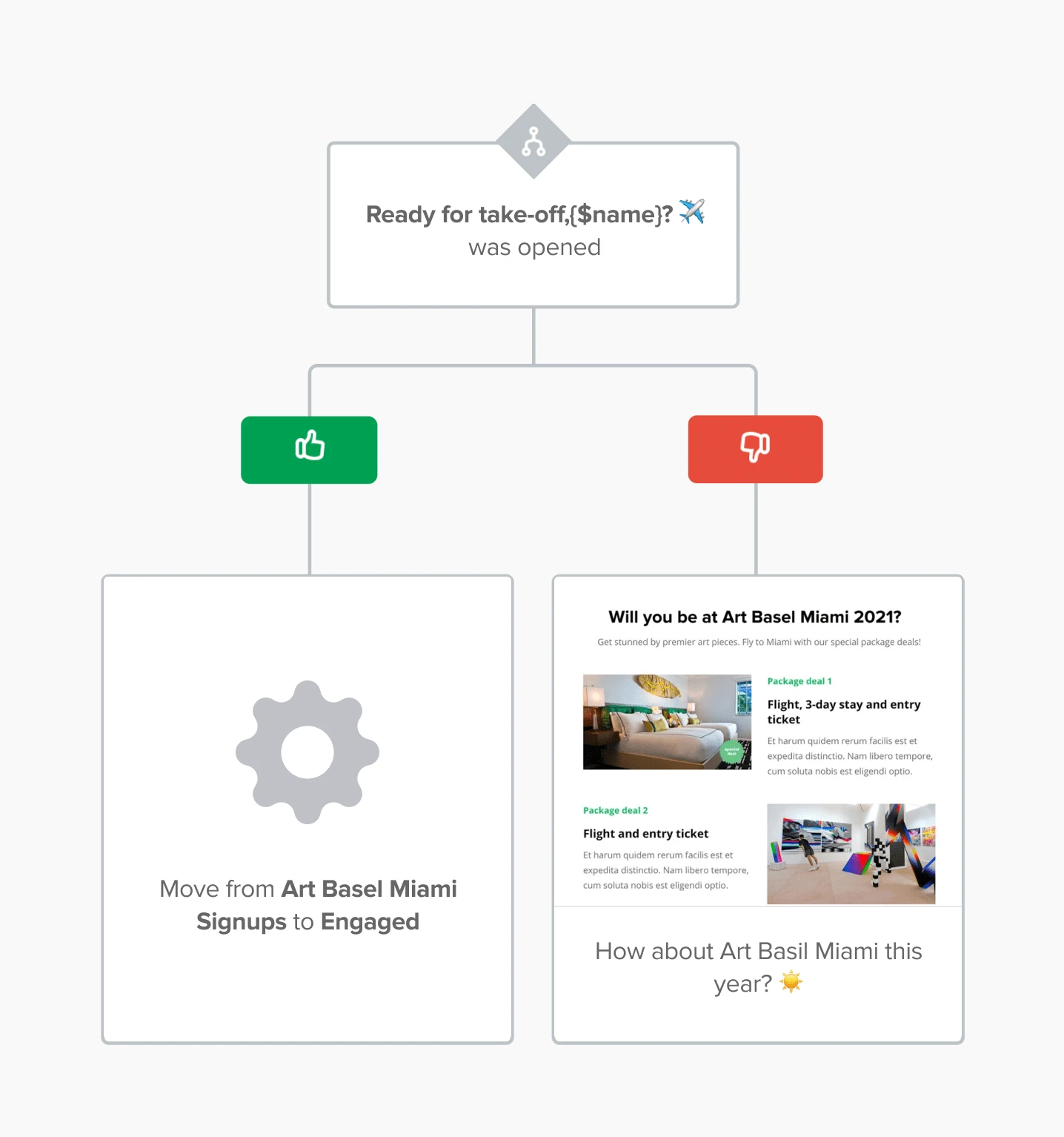
In this example, if Sally opens the first email she will be added to a group named ‘Engaged’. If she doesn't, she will receive it again with an updated subject line.
Once Sally is engaged, it’s the perfect opportunity to upsell her on the premium package that includes a 3-night hotel stay. Sally gets a great deal and she doesn’t have to deal with the headache of finding her own accommodation. Win-win!
3. Automatically deliver post-purchase emails
After Sally bites the bullet and purchases the Art Basel Miami package, you can automatically deliver event information like line-up, start times, hotel check-in times, transport information, etc.
For this automation you can use the e-commerce trigger ‘Purchase specific product’ which will send an automated email once the purchase has been completed.
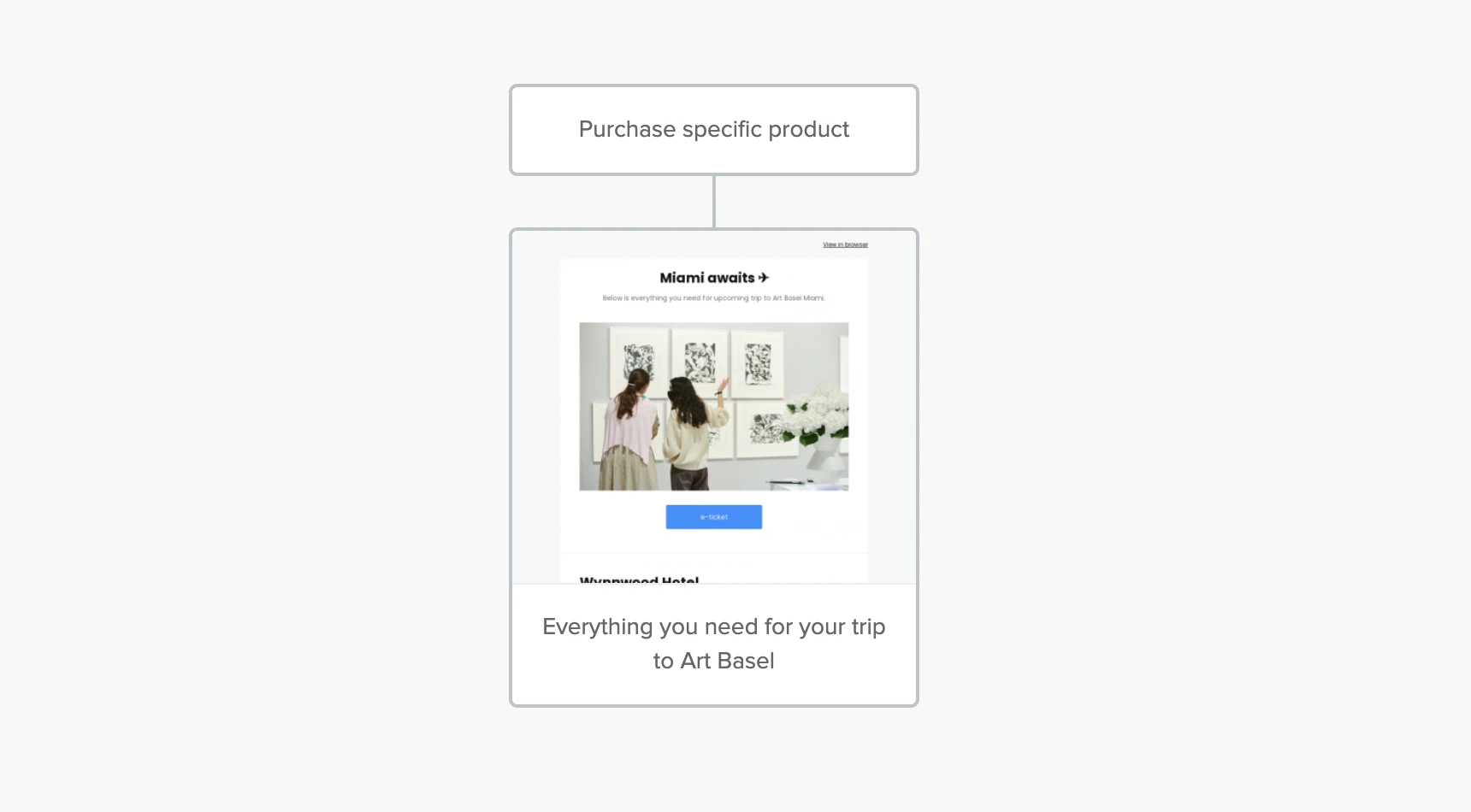
As soon as Sally buys her Art Basel package, she’ll instantly receive all the important information about the event, where she’s staying and how to get around.
4. Automatically cross-sell related products
Cross-selling is a technique that involves selling an additional product or service to an existing customer. In the days leading up to Art Basel, you can automatically send Sally related offers she may be interested in while in Miami.
In this example, cross-sell offers might be something like:
Airport transfers
After-party tickets
Restaurant vouchers
The best part is you don’t need to create a new automation for your cross-selling emails, you can add them to your post-purchase workflow!
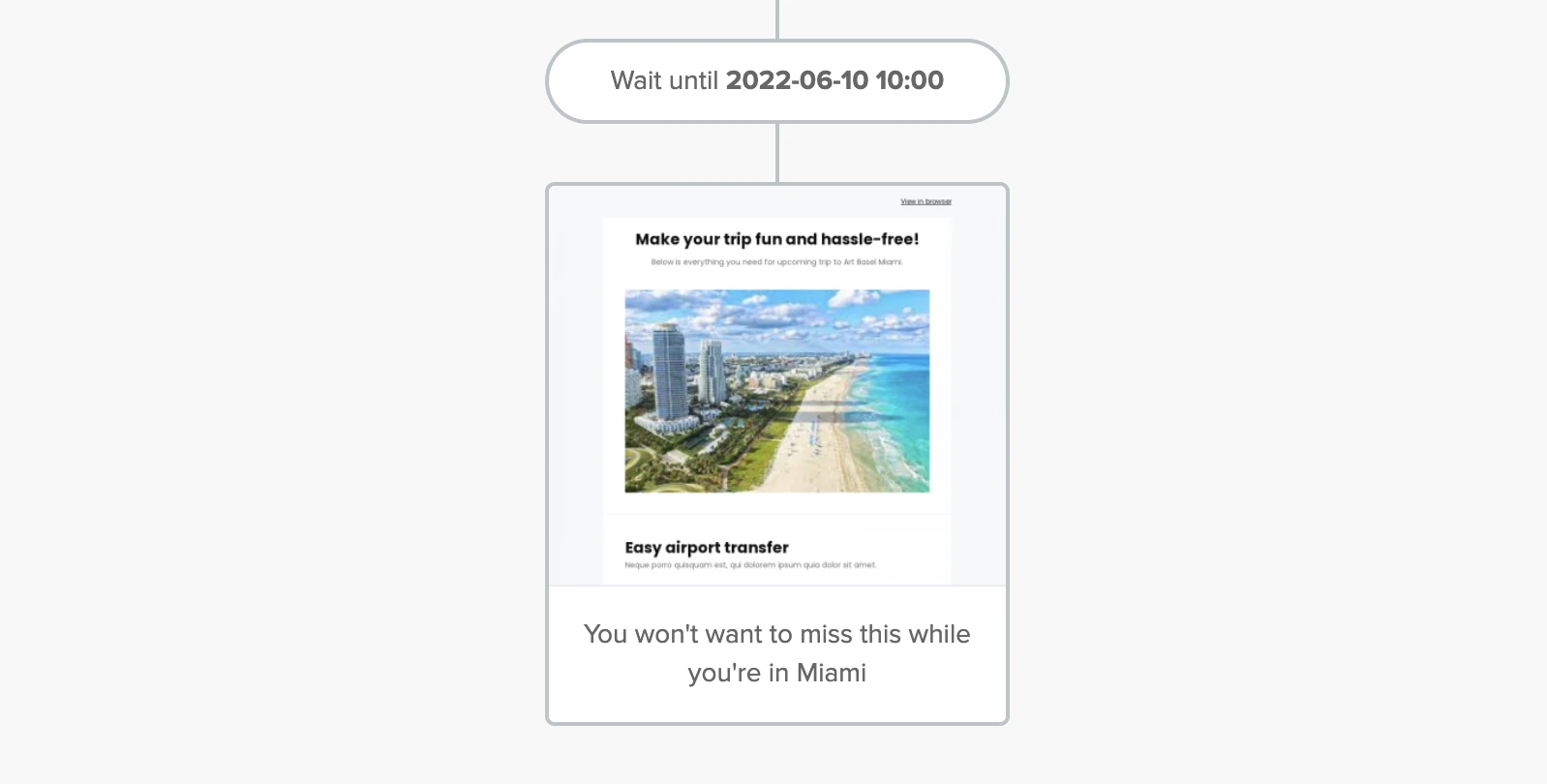
In this example, we added a delay step so that the cross-sell email doesn’t fire off until a week before the event.
5. Automatically collect customer feedback
After Sally has been to Art Basel and enjoyed her 3-night stay in Miami, you want to know if she was satisfied with her experience right?
The best way to do that is to include a customer feedback email in the post-purchase workflow that’ll be automatically sent out a few days following the event.
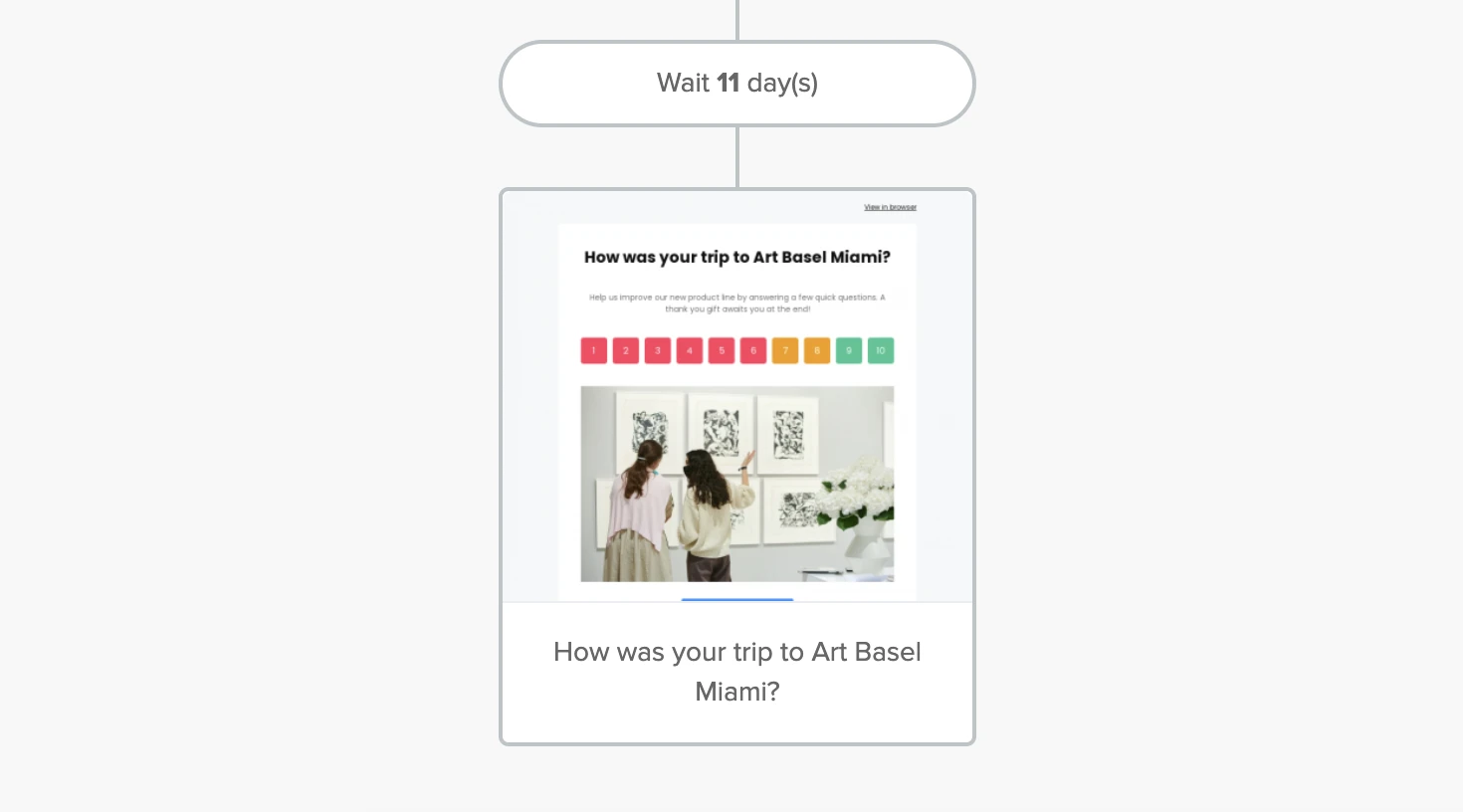
In this example, our customer feedback email includes an NPS survey. If Sally scores her experience a 9 or 10, you can follow up with an invitation to leave a review of your service. You can post reviews on your website and social media profiles or include them in your newsletters to provide social proof to potential customers.
If Sally scores her experience lower, you can follow up by asking her where her trip could have been improved. You can use the survey data to improve your offerings and ultimately your customer satisfaction levels.
Want to create your own email automation workflow?
Sign up for MailerLite to start automating your targeted email campaigns today!
Get inspired by these targeted email marketing campaigns
Let’s take a look to see how these two forces can work wonders!
Example #1: Netflix
Netflix’s algorithm can identify what you’re currently watching, and then send you a triggered email requesting feedback. This means that they can send you even more personalized film and series recommendations the next time. (Quick, let’s make some popcorn!)
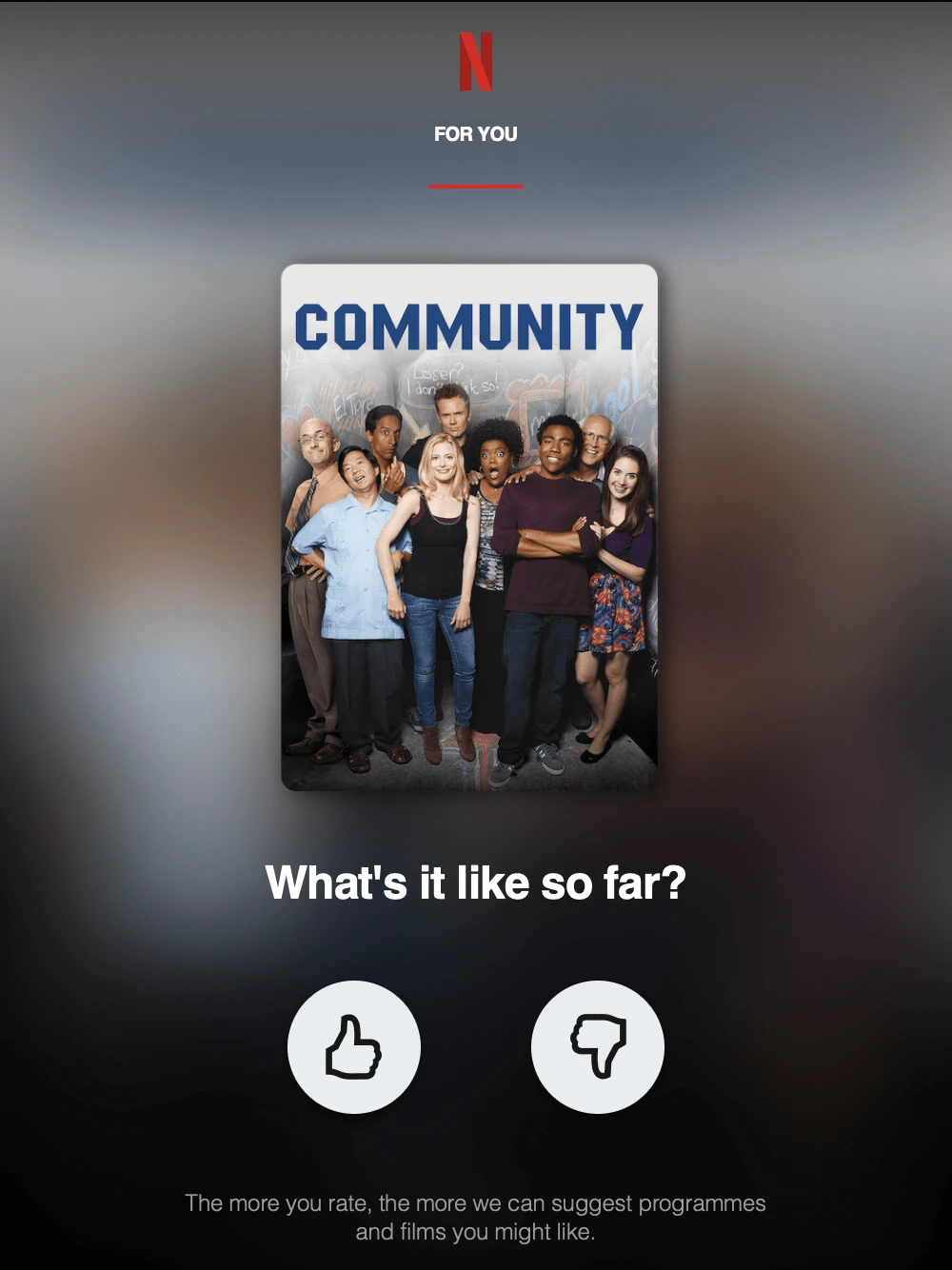
Example #2: Spotify
Spotify really nailed its behavioral segmentation and automation strategy. In this email, they are offering concert tickets based on the music you listen to. Chances are, if someone is regularly listening to the Stereophonics, then they’ll jump at the chance to hear them live.
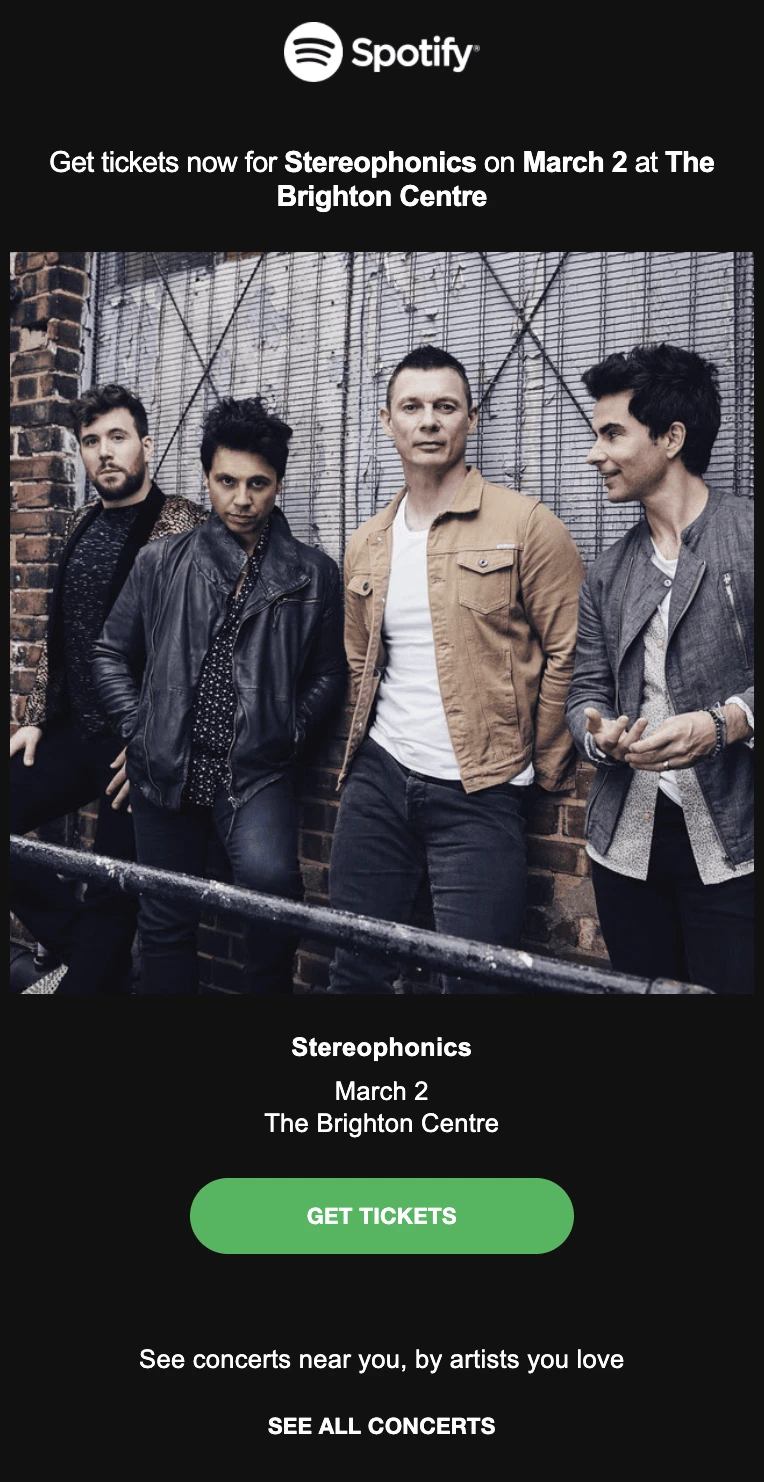
Example #3: IL MAKIAGE
Makeup brand IL MAKIAGE shares a quiz on their site that helps people to identify which foundation will best match their skin tone and type. They then receive a marketing email with the results. The following marketing emails are tailored to include the subscriber’s ideal foundation match, so that they receive relevant content every time.
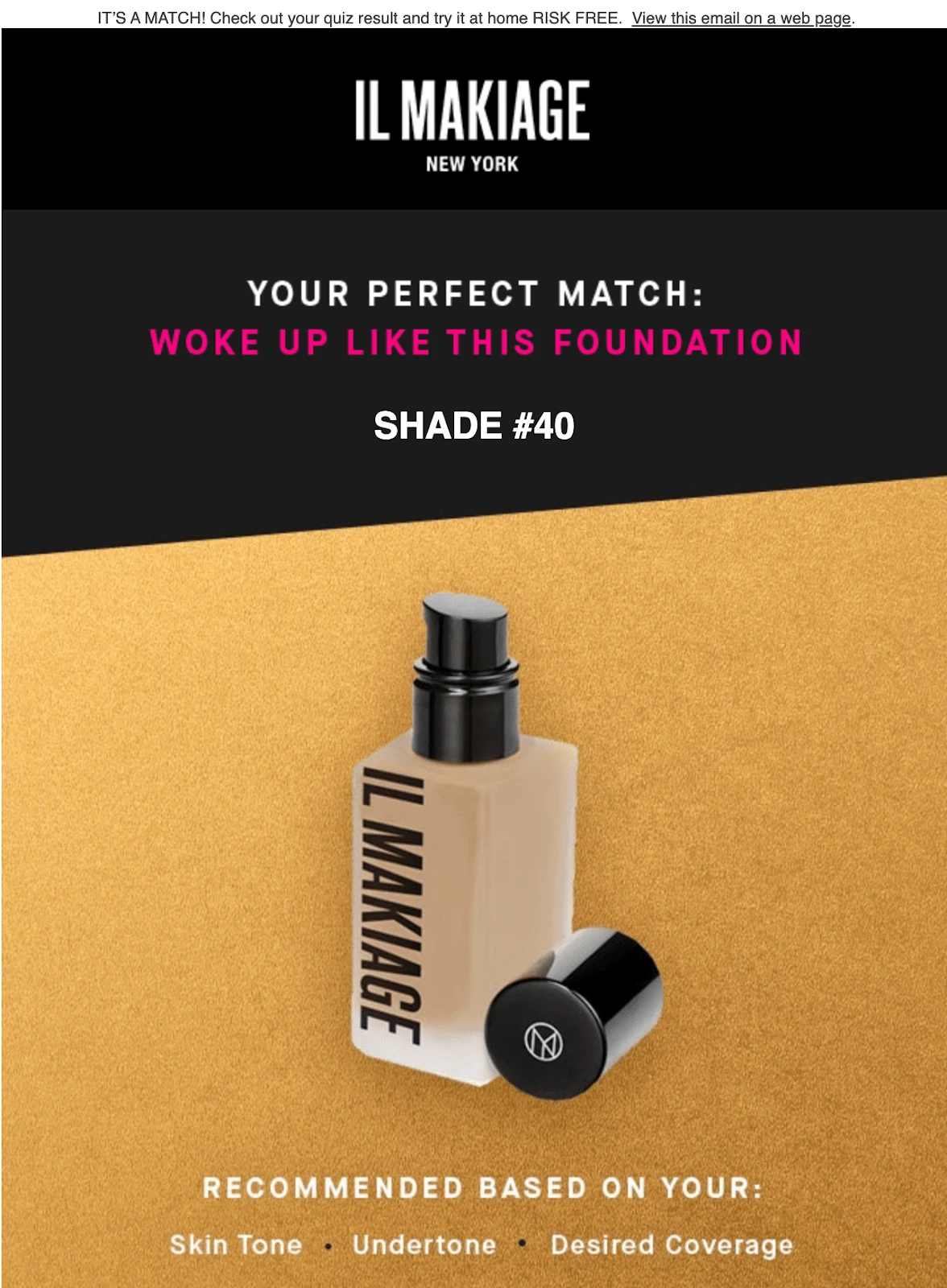
If people don’t take action and start the purchasing process, then they receive follow-up re-engagement emails to encourage them to convert—along with a coupon code to sweeten the deal!
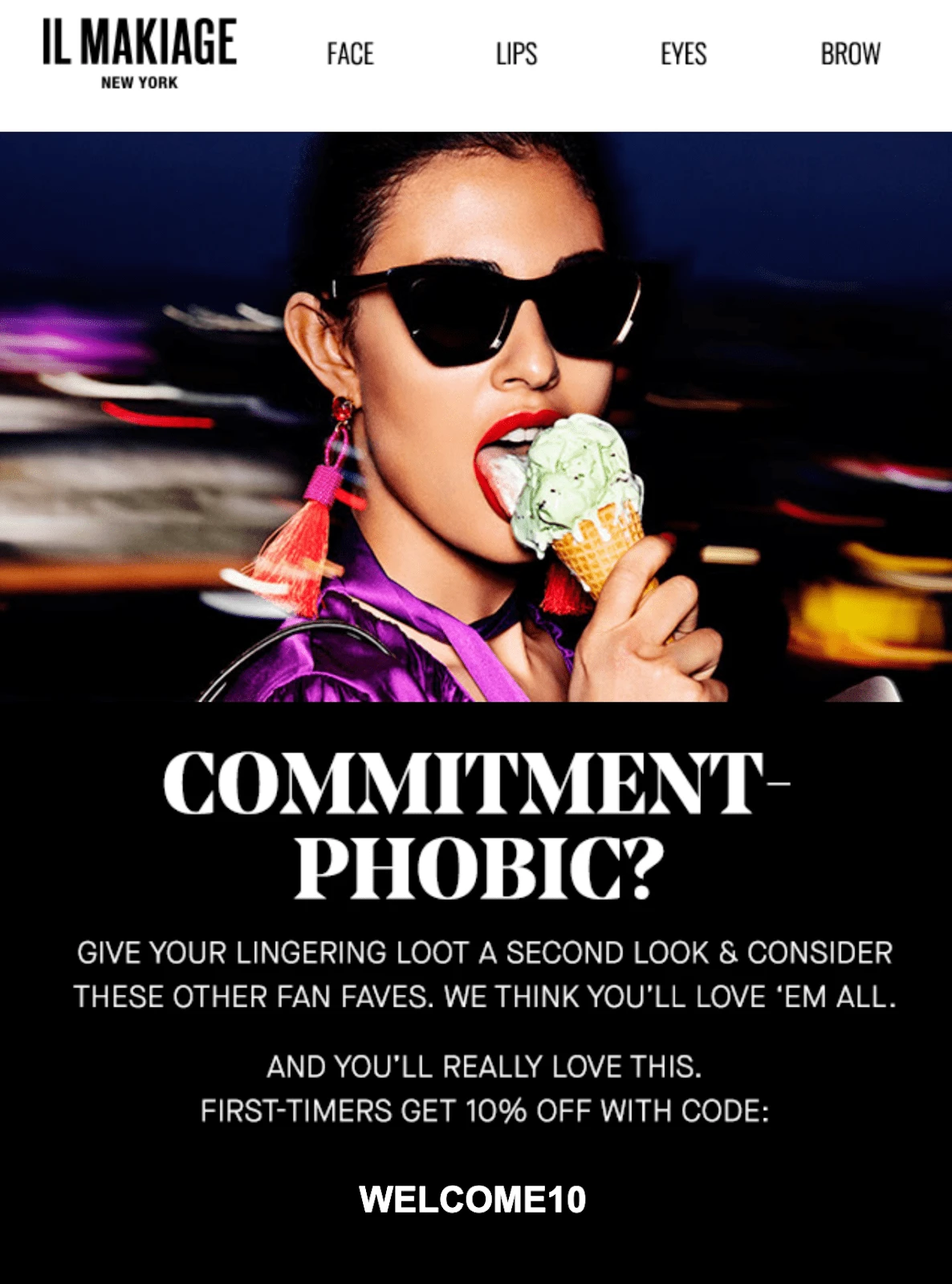
Example #4: G2
The marketers at G2 send out an email that lets people share their reasons for signing up, so that they can deliver even more relevant content. Adding link triggers in your campaigns is easy to do, and it can deliver long-term results!
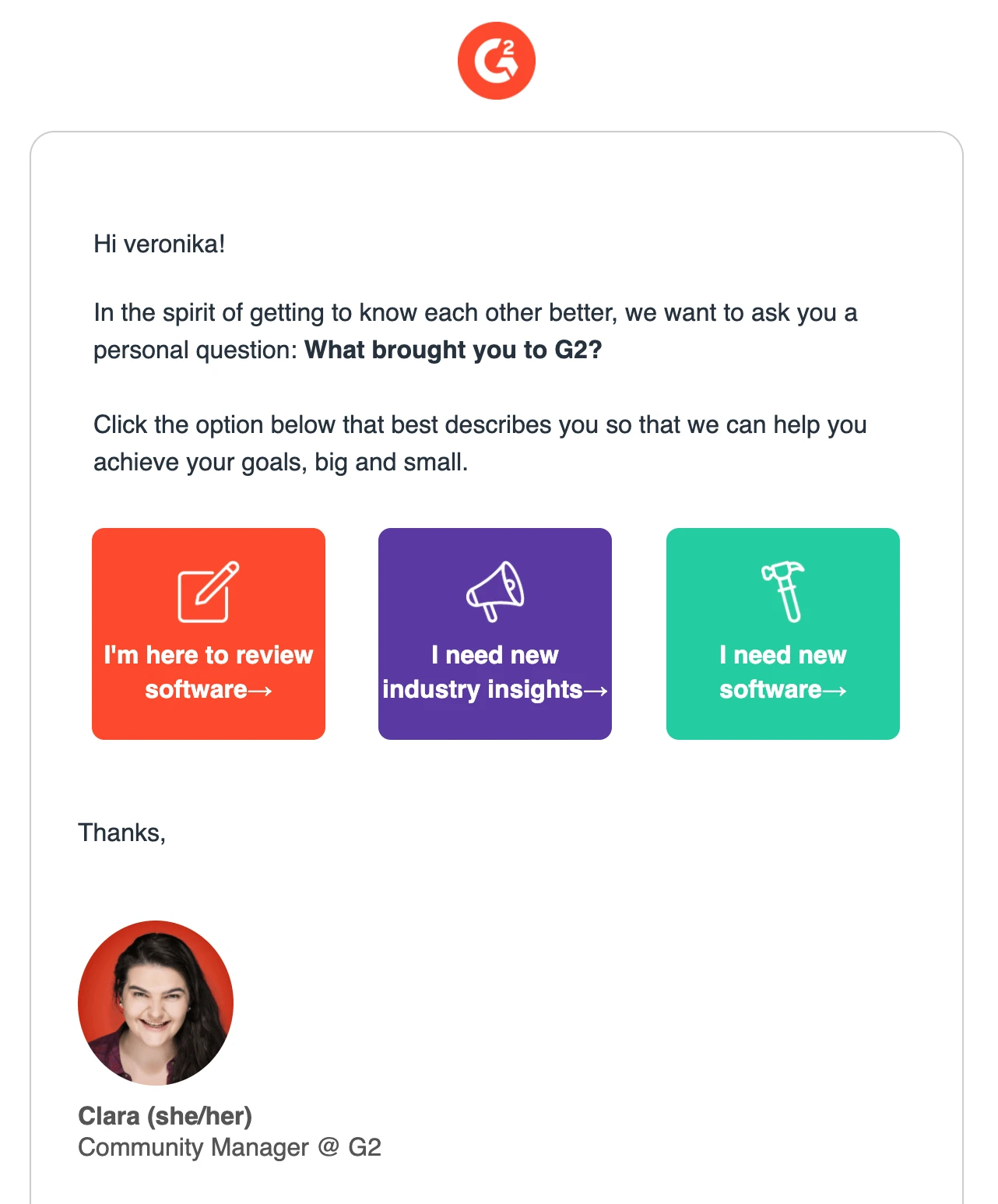
Why targeted emails will work wonders for you too
When you send targeted emails, you're showing that you understand their needs and that you're willing to cater to them. This, in turn, builds trust and strengthens relationships.
By combining list segmentation and email automation it’s easier than ever to deliver the right email to the right person at the right time.
Which type of behavioral email segmentation are you going to try first? Let us know in the comments!
And for extra tips, check out this ultimate guide on email automation.
Editor's note: This article was originally published in May 2019. It has now been updated with new insights and examples of behavioral segmentation and email automation.
